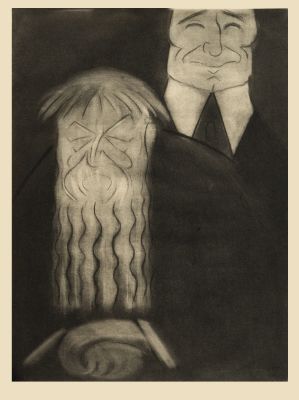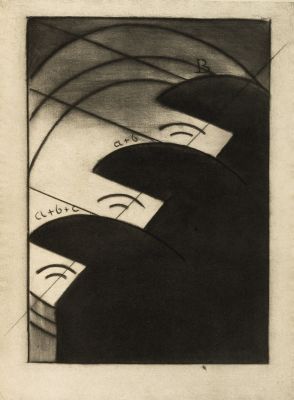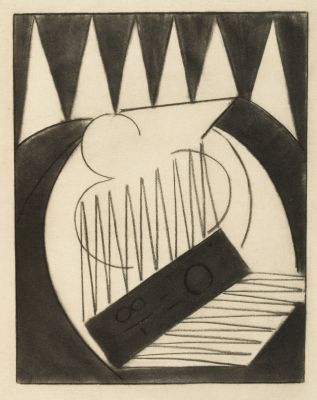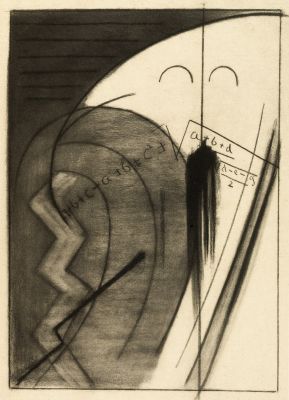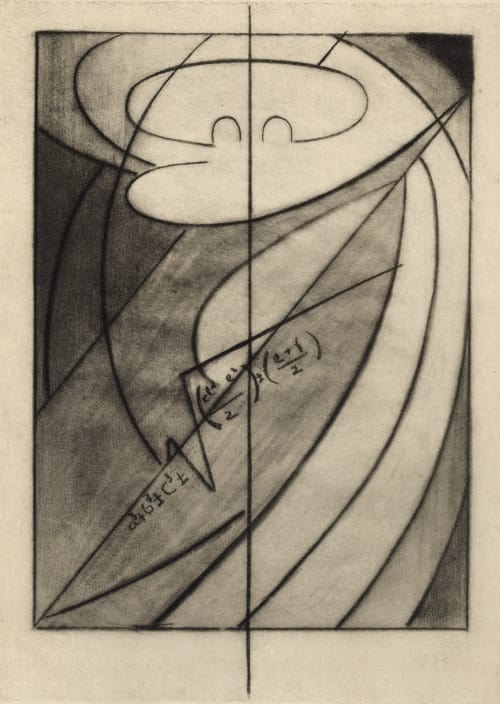
Title
Mrs. Eugene Meyer, Jr.Artist
De Zayas, Marius (Mexican, 1880-1961)Publication
Camera Work XLVIDate
1914Process
PhotogravureAtelier
Manhattan Photogravure Company, NYImage Size
24.3 x 18 cm
The first American artist to offer a truly radical break with the visual portrait tradition was Mexican-born Marius de Zayas, a member of Alfred Stieglitz’s avant-garde circle. Influenced by cubist and primitive stylization of the figure, de Zayas began to experiment with his own theory of "abstract caricature." In his portrait drawing of his friend Agnes Meyer, a multi-talented art enthusiast, writer, and Stieglitz-circle patron, he represented the physical being with geometric shapes balanced symmetrically around a central axis to connote her renowned beauty. A complex mathematical formula symbolizes her intelligence, while upward-sweeping diagonals indicate Meyer’s dynamic progression through life. De Zayas’s innovative approach influenced Francis Picabia and other dada artists who contributed to the brief vogue for symbolic portraiture.
Reproduced / Exhibited
Greenough, Sarah, and William C. Agee. Modern Art and America: Alfred Stieglitz and His New York Galleries; [catalog of an Exhibition Held at the National Gallery of Art, Washington, D.C., 28 January – 22 April 2001]. Washington: National Gallery of Art, 2000. fig. 55 (original)

